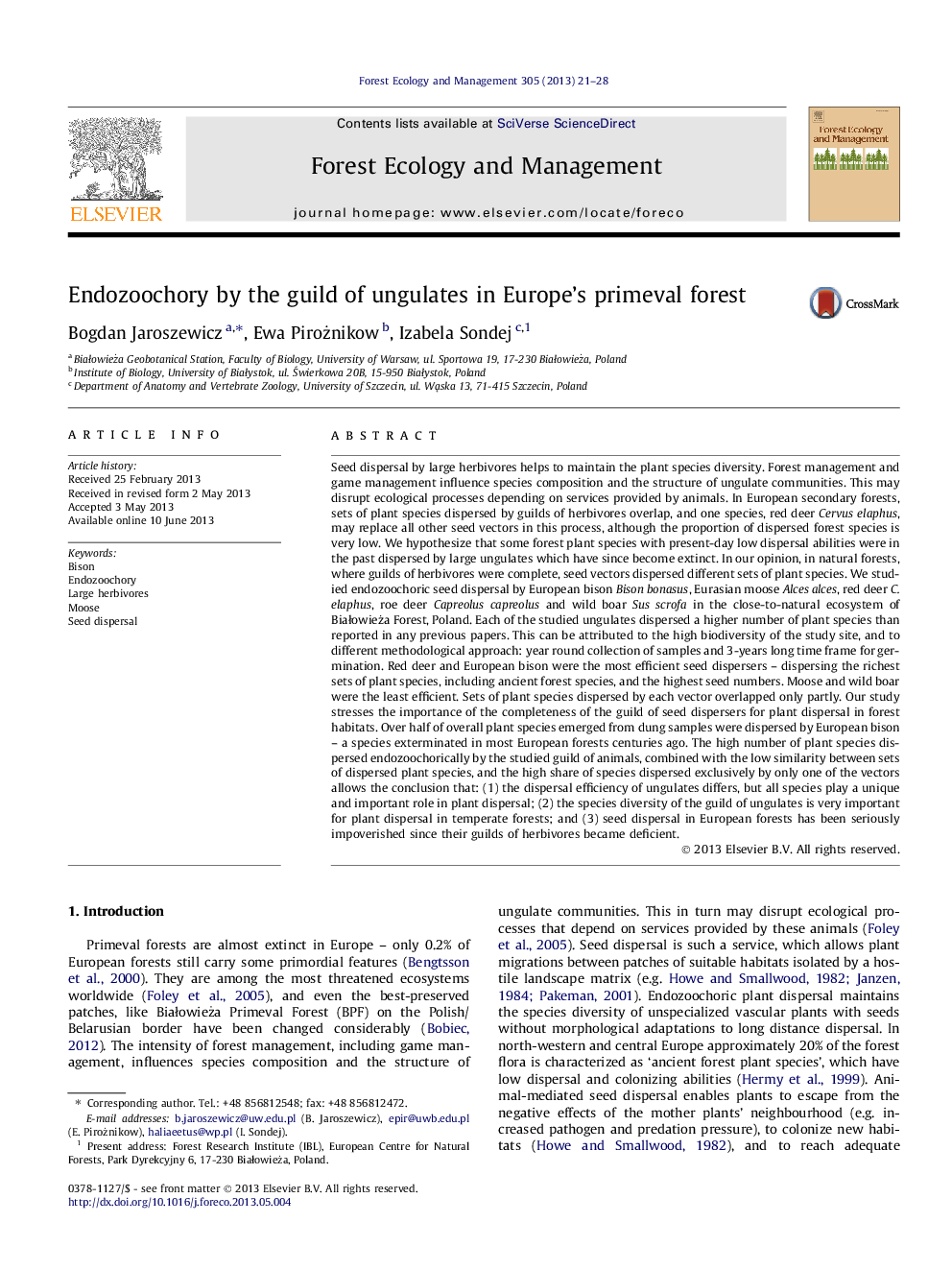| کد مقاله | کد نشریه | سال انتشار | مقاله انگلیسی | نسخه تمام متن |
|---|---|---|---|---|
| 86801 | 159215 | 2013 | 8 صفحه PDF | دانلود رایگان |

• The diversity of ungulates is important for plant dispersal in temperate forests.
• Each ungulate species plays a unique and important role in plant dispersal.
• High share of plant species is dispersed exclusively by only one of the vectors.
• Seed dispersal has been impoverished since guilds of herbivores became deficient.
Seed dispersal by large herbivores helps to maintain the plant species diversity. Forest management and game management influence species composition and the structure of ungulate communities. This may disrupt ecological processes depending on services provided by animals. In European secondary forests, sets of plant species dispersed by guilds of herbivores overlap, and one species, red deer Cervus elaphus, may replace all other seed vectors in this process, although the proportion of dispersed forest species is very low. We hypothesize that some forest plant species with present-day low dispersal abilities were in the past dispersed by large ungulates which have since become extinct. In our opinion, in natural forests, where guilds of herbivores were complete, seed vectors dispersed different sets of plant species. We studied endozoochoric seed dispersal by European bison Bison bonasus, Eurasian moose Alces alces, red deer C. elaphus, roe deer Capreolus capreolus and wild boar Sus scrofa in the close-to-natural ecosystem of Białowieża Forest, Poland. Each of the studied ungulates dispersed a higher number of plant species than reported in any previous papers. This can be attributed to the high biodiversity of the study site, and to different methodological approach: year round collection of samples and 3-years long time frame for germination. Red deer and European bison were the most efficient seed dispersers – dispersing the richest sets of plant species, including ancient forest species, and the highest seed numbers. Moose and wild boar were the least efficient. Sets of plant species dispersed by each vector overlapped only partly. Our study stresses the importance of the completeness of the guild of seed dispersers for plant dispersal in forest habitats. Over half of overall plant species emerged from dung samples were dispersed by European bison – a species exterminated in most European forests centuries ago. The high number of plant species dispersed endozoochorically by the studied guild of animals, combined with the low similarity between sets of dispersed plant species, and the high share of species dispersed exclusively by only one of the vectors allows the conclusion that: (1) the dispersal efficiency of ungulates differs, but all species play a unique and important role in plant dispersal; (2) the species diversity of the guild of ungulates is very important for plant dispersal in temperate forests; and (3) seed dispersal in European forests has been seriously impoverished since their guilds of herbivores became deficient.
Journal: Forest Ecology and Management - Volume 305, 1 October 2013, Pages 21–28